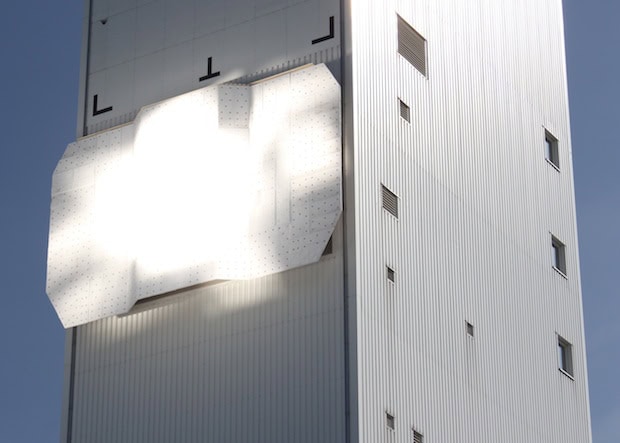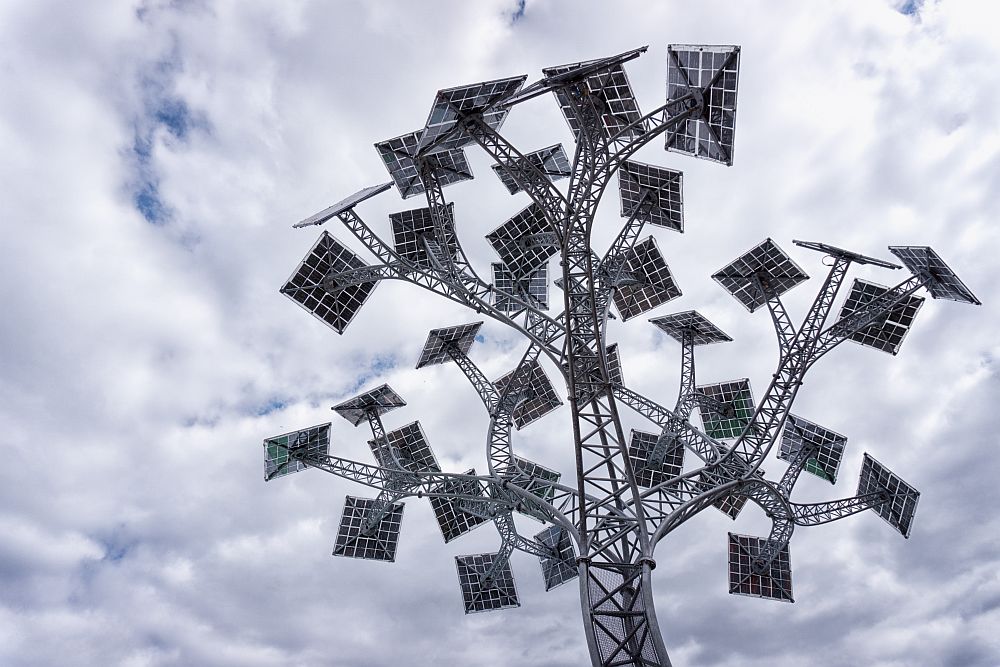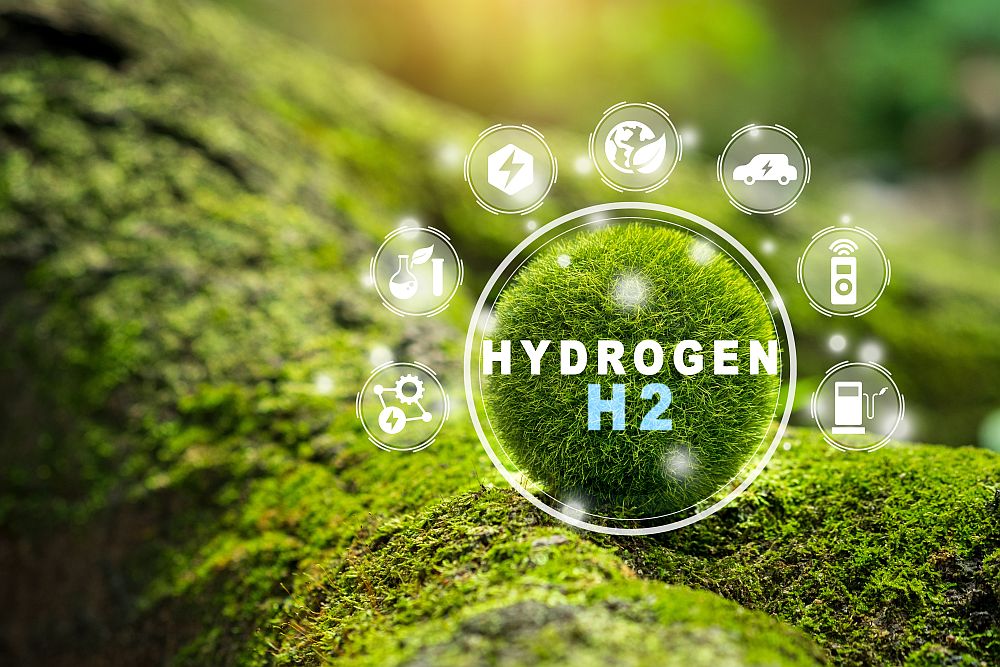

More than 2,000 mirrors reflect sunlight onto the high-temperature receiver of DLR’s test solar power plant tower in Jülich, Germany. The sunlight heats porous SiC cubes, which then transfer the heat to ambient air to begin the power generation process. Credit: DLR.
A few weeks ago we reported on work on solar “power tower” technology being developed by researchers at Sandia National Laboratories. The process employed sand-like ceramic particles to store heat that could then be used to produce electricity on demand.
Solar concentrators tend to work best in places that receive intense sunlight, and a lot of it—like, for example, the New Mexico desert. But that hasn’t stopped scientists at the German Aerospace Center (Deutsches Zentrum für Luft- und Raumfahrt, or DLR) from developing and testing a concentrator system in Jülich, Germany. About 40 km west of Cologne, the town receives an average of 1,452 hours of sunlight per year—about one-third of daylight hours. The Jülich facility features a new solar receiver said to significantly boost solar conversion efficiency, according to this news release.
The Jülich installation uses more than 2,000 mirrors to focus sunlight onto the receiver (large photo; credit: DLR) on the facility’s 60-m tall tower. Porous ceramic cubes absorb the solar radiation to generate temperatures higher than 700°C, the release says. The cubes heat air as it passes through the receiver and then direct it to the power generating portion of the tower. Using ambient air makes the design particularly suited for use in dry, sunny regions, according to the release.
In an email message, project director Peter Schwarzbözl says the ceramic cubes at the heart of the system are sintered silicon carbide extruded into a monolithic honeycomb shape. “The manufacturing process is similar to particle filter technology for the automotive industry,” he explains. “The absorber monoliths have about one liter of gross volume and porosity of 50%. The channel size is 2 mm × 2 mm. The next generation will have smaller channels, thinner walls and higher porosity.”
According to Schwarzbözl, SiC has a good combination of heat resistance above 1000°C in ambient air and thermal shock resistance—important as the power plant cycles between ambient and maximum temperature. However, he adds, the researchers are studying the potential of other ceramic compositions and forms, particularly if they allow finer structures with more porosity. “Apart from monolithic honeycombs, we are also considering fiber meshes and foams of high open porosity,” he says. “We have seen good results in lab scale experiments already, but durability and combination with a support structure are still issues.”
In addition to ceramics, research on the next generation of receiver materials will include metals and materials with finer porous structures, according to the release. Materials research is being conducted in cooperation with the DLR Institute of Materials Research.
The Jülich test facility can generate up to 1.5 MW of electricity, a power level that Schwarzbözl says facilitates modification of the receiver and monitoring of its operation. And, just FYI, DLR also operates a facility in Almeria on Spain’s Costa del Sol, which averages 3,050 hours of sunshine annually.
Author
Jim Destfani
CTT Categories
- Energy
Related Posts
‘Fairy circles’ may help mark natural underground hydrogen deposits
September 18, 2025


